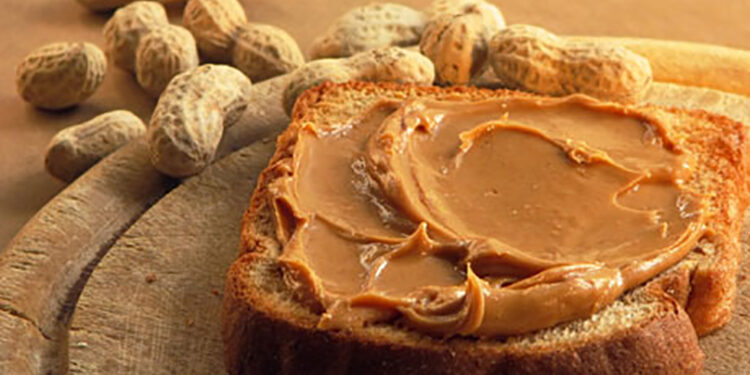The cause of the latest salmonella scare is thought to be peanut butter – specifically Trader Joe’s Valencia creamy, salted peanut butter. I know many of you shop at T.J’s, so if you have a jar – get rid of it! The source of this latest multi-state outbreak is being linked to this particular butter, although T.J.’s say that the only reason they are recalling it is because they are being super-cautious.
Vegans tend to be less at risk for Salmonella because they don’t eat factory-farmed meat, eggs or dairy, however, as we can see from the peanut butter contamination, and recent spinach and tomato contamination, no one is safe nowadays.
If you’ve never had salmonella poisoning, I can assure you that it’s not fun. I got it from some undercooked chicken in England – chicken that was cooked by my mother! The awful thing is that I remember commenting that it looked a bit pink, and mom telling me “not to be ridiculous.” The poor woman’s never forgiven herself because I was so ill. The symptoms typically present 12-72 hours after infection (which is exactly when I was on my way to Ireland on a ferry!). Symptoms include violent stomach cramps, throwing-up, diarrhea, aching muscles, shivers and headaches. There are 40,000 cases of Salmonella reported in America each year, and 600 of those are fatal. Like a flu, it’s babies and the elderly that are most at risk. Many of the fatal cases have been children under the age of 5.
So, which foods can potentially contain Salmonella? the obvious culprits are raw meat, poultry, fish and eggs. This is a little simpler to deal with because you have to just make sure that these foods are well cooked. You also have to be very careful when preparing these foods and make sure you follow a few basic steps. Raw fruits, veggies (especially raw sprouts) , nuts (especially raw almonds), and spices can also be contaminated, mainly by contaminated water. The pollution from factory farm animal waste is a serious problem. The run-off into our waterways can lead to widespread pollution. Animal feces is how Salmonella gets into food, and Salmonella survives for a long time in water. This run-off can also contaminate fruit and vegetable crops.
Salmonella poisoning has dramatically increased since the 1990’s and the prime reason is believed to be factory farming, where animals are kept in confined spaces. The bacteria is passed through their feces, contaminates the water and the untreated manure; and the animals are kept ankle-deep in crammed quarters – so gross. This is one of many reasons why I never purchase factory farmed meat or dairy products, however, you have to be careful even when buying organic.
How does it get into peanut butter? Again, contaminated water is the most likely explanation, and this contamination would have to occur after the roasting takes place. Birds tend to gather around peanut butter processing plants and their feces can easily contaminate the water. The bad thing about peanut butter is that because of its fat, the Salmonella bacteria can survive for a long time.
As far as anti-bacterial sprays are concerned, the chlorine bleach (ugh) will kill 99.9% bacterias almost immediately. If you want to use less toxic and more eco friendly options such as hydrogen peroxide or white vinegar, just be sure that you leave it on the surface you have sprayed, for 10 full minutes, before rinsing or wiping off. Hydrogen peroxide if left for 10 minutes is effective at killing the Salmonella bacteria.




